Menu
Physics Lesson 6.1.1 - What is Centre of Mass?
Please provide a rating, it takes seconds and helps us to keep this resource free for all to use
Welcome to our Physics lesson on What is Centre of Mass?, this is the first lesson of our suite of physics lessons covering the topic of Centre of Mass. Types of Equilibrium, you can find links to the other lessons within this tutorial and access additional physics learning resources below this lesson.
What is Centre of Mass?
Suppose you hang a rectangle made of cardboard at the middle of the longest side, as the one shown in the figure.
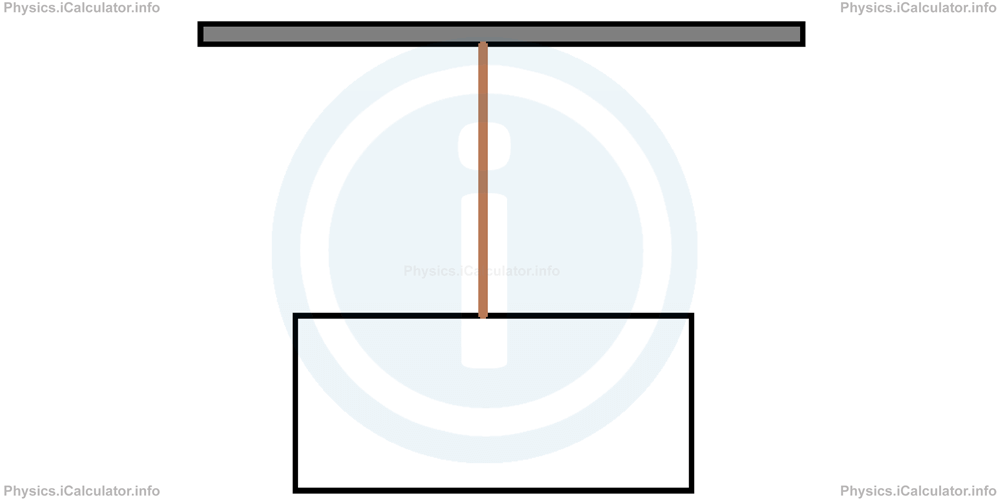
When you release it, the cardboard may start to swing as shown below.
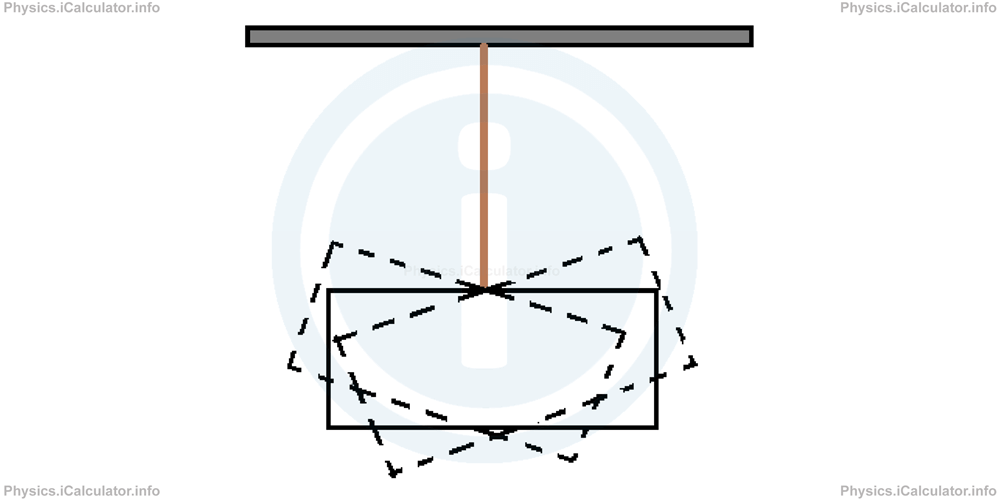
However, after a while, it eventually stops swinging, at the original position shown in the first figure. This is because the right half of the rectangle is equally heavy as the left half, i.e. these is a certain symmetry in the distribution of gravitational force acting on both halves of the cardboard rectangle. The string here acts as a line of symmetry between the two halves of the rectangle if we virtually extend it so that the extension passes through the rectangle as show below.
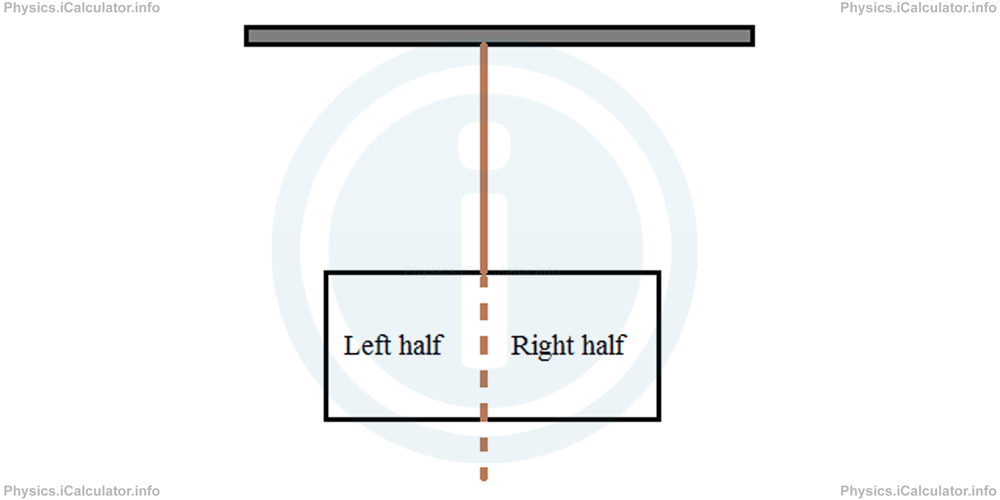
But, when you cut a piece (let's say one quarter) from the rectangle as shown in the figure below,
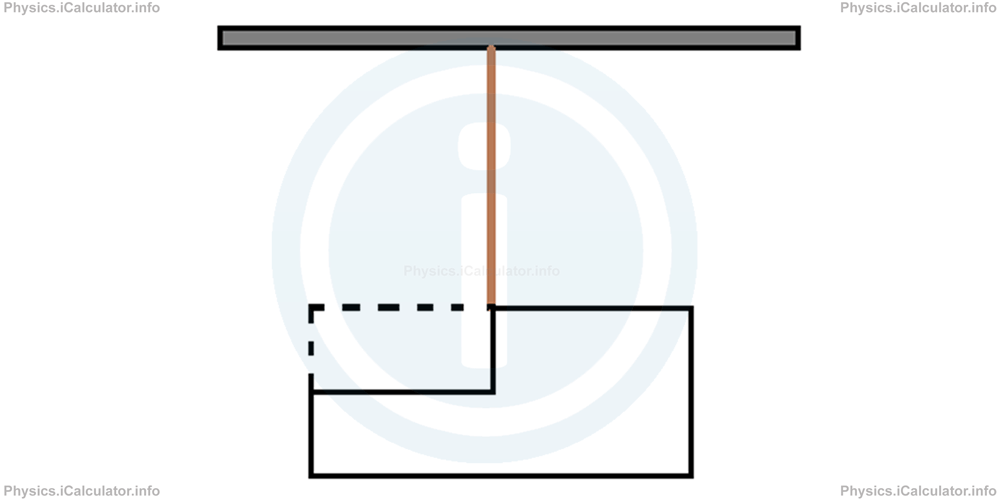
it is impossible for the object to stay in this position after released. It will swing and occupy a final (equilibrium) position like the one shown below.
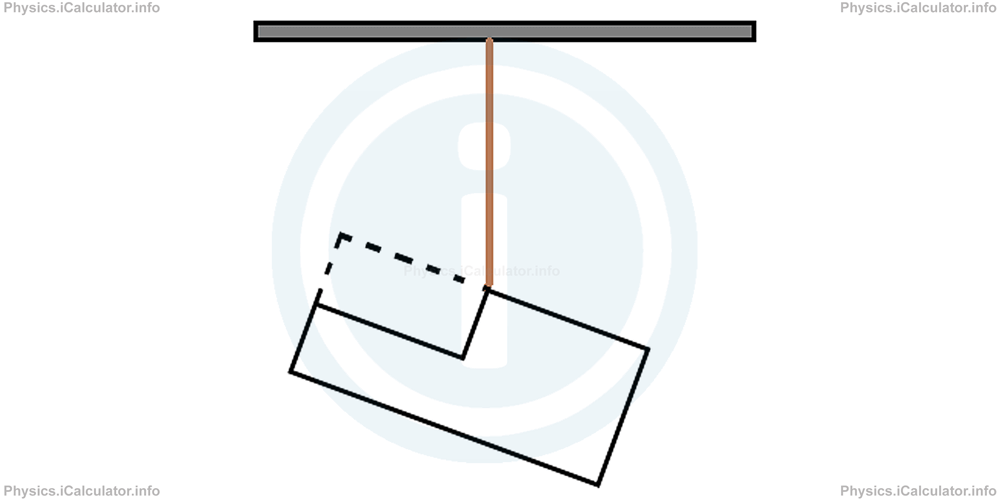
This is because there is no symmetry anymore; the right part of the figure is twice as heavier as its left part, and therefore, the Earth attracts it more. As a result, the right part of the cardboard figure will lower more than its left part in order to achieve stability.
It is clear that the imaginary extension of the string passing through the cardboard object cannot literally be considered anymore as a line of symmetry, as it is obvious that the right piece is not identical to the left one. However, we can think it as a line that divides the cardboard object in two parts of equal weight as the object tries to occupy such a position in which it responds evenly to the gravitational attraction. Look at the figure.
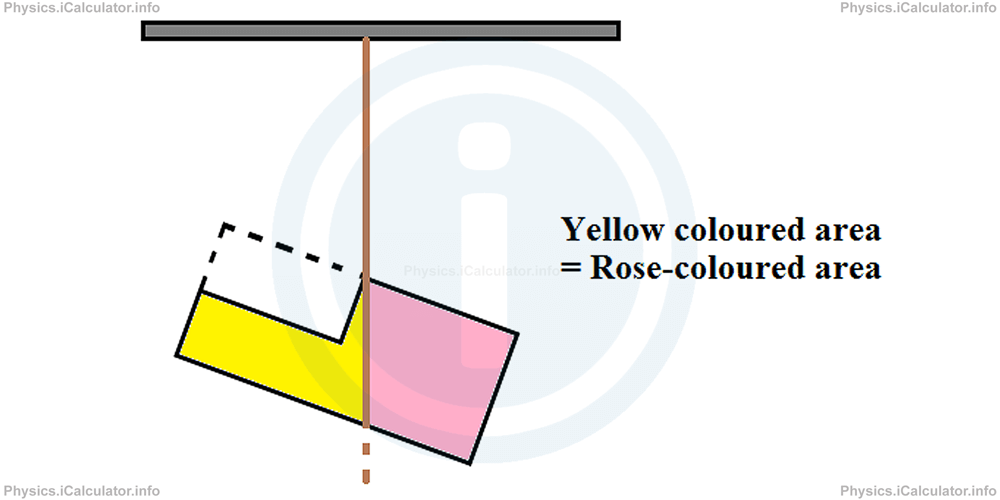
The yellow-coloured part has the same area as the rose-coloured one. As a result, it has the same weight as well. Therefore, we can think the extension in the direction of the string, (i.e. in the vertical direction) that passes through the hanged object as a "line of equilibrium."
If we hang the same object at another position, obviously, there will be another "line of equilibrium" (determined by the gravitational attraction) to be drawn, as shown in the figure below.
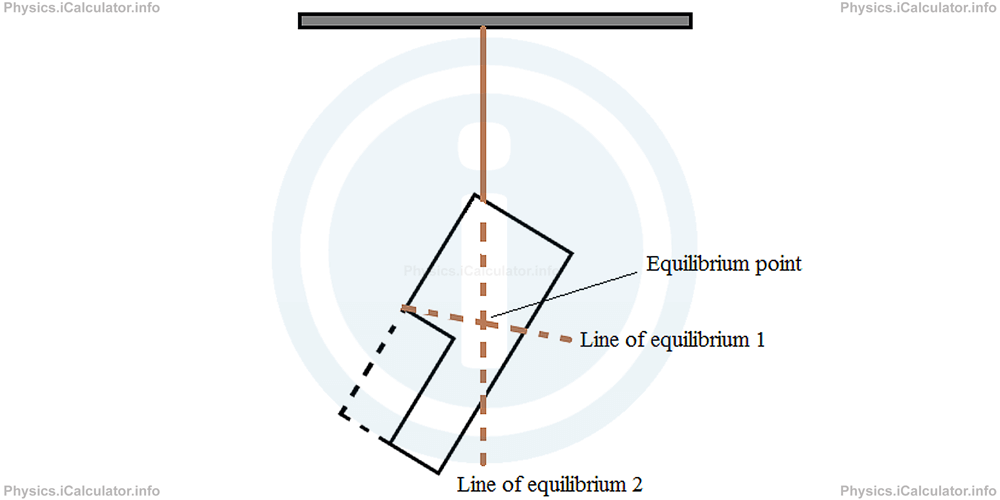
From Geometry, it is known that two lines cross at a single point. Therefore, when two lines of equilibrium cross, we obtain a single point, known as equilibrium point, which is very special regarding the stability of the object. In Physics, this point is known as the "centre of mass" or "centre of gravity" and it is the only point of the object in which there will be no swings, slants, falls, etc. when the object is hanged through or placed on it. This means that when the object shown in the figure above is stuck on the wall at the centre of mass using a nail, the object does not swing around to achieve the equilibrium dictated by the gravity as it is already in equilibrium.
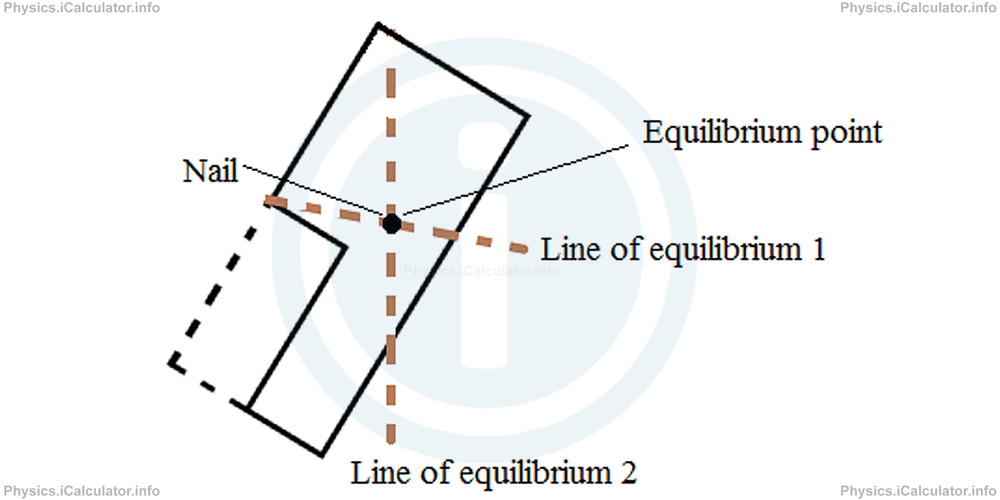
From all said above, it is obvious that we need to hang the object at least in two different positions in order to find its centre of mass (gravity).
Usually, the centre of mass of an object is denoted by C. The number of coordinates required to represent the point C depends on the number of dimensions the situation described involves. Thus, for a long and thin bar, there is only one coordinate needed as it is considered as a one-dimensional object. When the object is a kind of thin plate, two coordinates are enough for the centre of mass. When the object is voluminous, there are three coordinates for the centre of mass C needed.
You have reached the end of Physics lesson 6.1.1 What is Centre of Mass?. There are 6 lessons in this physics tutorial covering Centre of Mass. Types of Equilibrium, you can access all the lessons from this tutorial below.
More Centre of Mass. Types of Equilibrium Lessons and Learning Resources
Whats next?
Enjoy the "What is Centre of Mass?" physics lesson? People who liked the "Centre of Mass. Types of Equilibrium lesson found the following resources useful:
- Definition Feedback. Helps other - Leave a rating for this definition (see below)
- Centre of Mass and Linear Momentum Physics tutorial: Centre of Mass. Types of Equilibrium. Read the Centre of Mass. Types of Equilibrium physics tutorial and build your physics knowledge of Centre of Mass and Linear Momentum
- Centre of Mass and Linear Momentum Revision Notes: Centre of Mass. Types of Equilibrium. Print the notes so you can revise the key points covered in the physics tutorial for Centre of Mass. Types of Equilibrium
- Centre of Mass and Linear Momentum Practice Questions: Centre of Mass. Types of Equilibrium. Test and improve your knowledge of Centre of Mass. Types of Equilibrium with example questins and answers
- Check your calculations for Centre of Mass and Linear Momentum questions with our excellent Centre of Mass and Linear Momentum calculators which contain full equations and calculations clearly displayed line by line. See the Centre of Mass and Linear Momentum Calculators by iCalculator™ below.
- Continuing learning centre of mass and linear momentum - read our next physics tutorial: Determining the Centre of Mass in Objects and Systems of Objects
Help others Learning Physics just like you
Please provide a rating, it takes seconds and helps us to keep this resource free for all to use
We hope you found this Physics lesson "Centre of Mass. Types of Equilibrium" useful. If you did it would be great if you could spare the time to rate this physics lesson (simply click on the number of stars that match your assessment of this physics learning aide) and/or share on social media, this helps us identify popular tutorials and calculators and expand our free learning resources to support our users around the world have free access to expand their knowledge of physics and other disciplines.